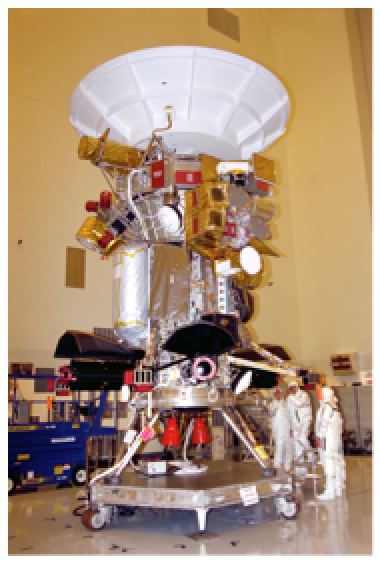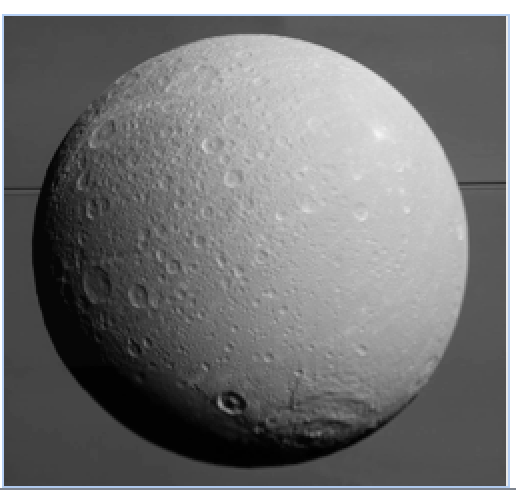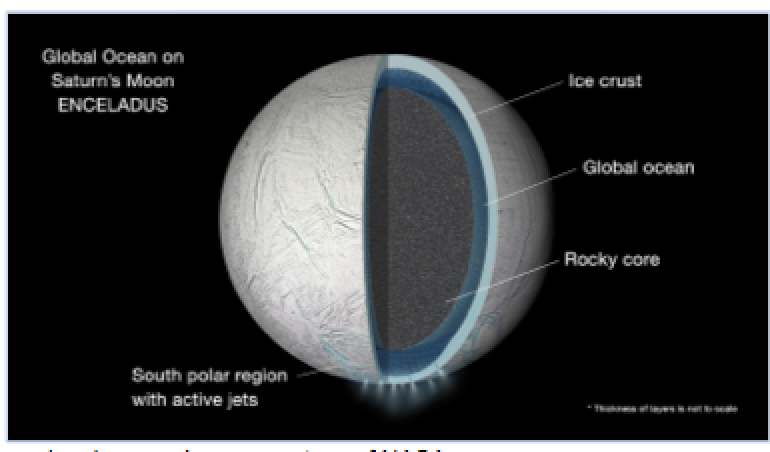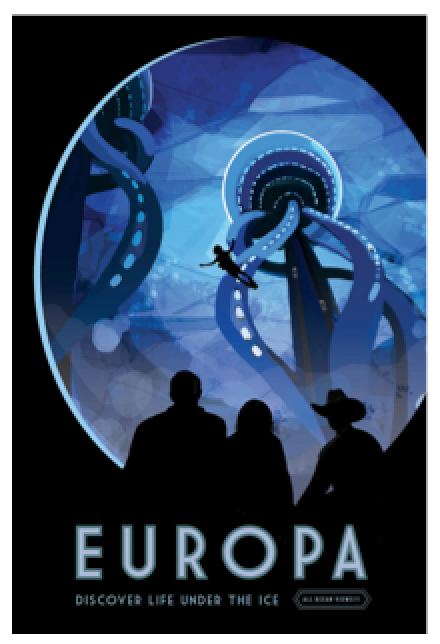
NASA’s ongoing Cassini mission, which sent a robotic probe in October 1997 into Saturn’s orbit to study the planet and its moons, has been quite productive: it discovered liquid water underneath the ice of the moon Enceladus and imaged Titan, the only other home to stable surface liquid in the solar system. Now, data gathered by the spacecraft suggests that liquid water is present on Saturn’s Dione, researchers reported in the journal Geophysical Research Letters in October 2016.
Cassini has the ability to precisely measure the gravitational field around Saturn and each of its moons through its High Gain Antenna, which is capable of detecting the radio signals that can inform such measurements. Unlike any other instrument aboard, this antenna—also known as a radio science subsystem—operates in real-time, broadcasting radio signals back to Earth. These signals can contain information about practically everything, from the atmosphere to the nature of Saturn’s rings. As Cassini is tugged around by the gravitational influence of Dione, the radio frequencies it emits are stretched or compressed, a phenomenon known as the Doppler effect. Measuring the received signals allows scientists to compute remarkable maps of the gravitational fields in Saturn’s neighborhood. With this information in hand, scientists can draw conclusions about the nature of the astronomical bodies themselves, since their inner composition influences their gravitational fields.

Following Cassini’s third and final flyby of Dione in 2015, scientists from the Royal Observatory of Belgium in Brussels related this data to geologic simulations, which suggested the presence of a subsurface ocean 60 miles below the moon’s surface. The best-fit model operated under the assumption of a global iceberg, just thick enough to support the surface features of the moon. The same simulations agree with the long-accepted idea of water on the moon Enceladus. Because of Enceladus’s ocean, the moon detectably wobbles. The scientists predict that Dione also wobbles as a result of this ocean, but at a level just below the detection limits of Cassini.
The group posits that Dione’s underground ocean directly surrounds the moon’s core, much akin to the accepted geology of its fellow moon, Enceledus. These interactions between liquid water and the rocky core can provide energy and nutrients, which are essential for life as we know it.
The suggestion of this phenomenon has been circulating since around 2013, when Cassini’s magnetometer, which measures magnetic forces, detected a weak stream of particles—energetic ions and electrons—emitted from Dione. These particles are similar in character to those observed on the moon Enceladus, where a slushy ocean spews out particles into the atmosphere above.

In the field of exoplanetary science, a planet’s ability to host liquid water is essential to its designation as “habitable.” These findings push scientists’ conception of habitability past the traditional characterization of a “goldilocks zone” around any given star—a region of defined radius surrounding the star that has the potential to support life. Home to a subsurface ocean, Dione joins the ranks of many other solar system objects which may contain liquid water – from saline streams on Mars, to oceans of water on the moons of gas giants such as Saturn and Jupiter, to water even on Pluto, as suggested recently by New Horizons. Such findings suggest that one of the most basic ingredients for life as we know it is far more common than previously imagined.

